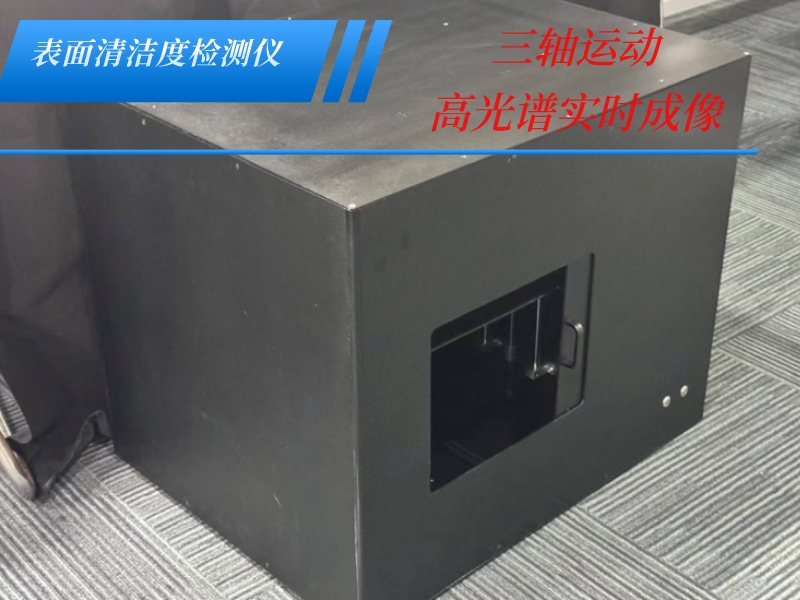Contact: WANG
Mobile: +86-138 0199 7980
Email: klaus@jnewtech.com
Address: Boyang Road16, Build23-A Room207, Shanghai
Reflectance System
- Hightlight:
- Specular reflectance
- Coating reflectivity
- UV, VIS, NIR measurement
- Spectrometer
For Email Quatation
klaus@jnewtech.com
- Introduction
Optical lens transmittance tester
Lens Lens Curved lens Reflectivity measurement
The research and development and production of optical lenses require low reflectivity lenses, which can ensure that more light can enter the lens without being reflected. Usually we will coat the lens in front of the lens to reduce the reflected light. The curved lens reflectivity test system is mainly used to measure the reflectivity of ordinary lenses, ordinary lenses, and ordinary curved lenses. Generally speaking, the reflectivity of the lens is usually required to be less than 1%, which requires a high accuracy of the test equipment. The error of general reflectivity test equipment is about 3-5%, which is difficult to achieve the 0.2-0.5% error accuracy required by customers.

Tn: Reflectivity
Sample: Spectrum of the lens
Dark: Noise of the spectrometer
Ref: Reference spectrum, or 100% fully reflected light, usually the spectrum of a whiteboard
Our advantages:
Integrated visible / near-infrared spectrometer
Integrated tungsten halogen lamp as light source, wide spectrum, long life bulb
Reflective sphere, or transmission sphere
Suitable for measuring mirror reflectivity
Coating reflectivity measurement
Curved lens transmittance detection
Measurement difficulties:
1. Because the reflectivity of the camera lens is usually required to be less than 1%, the accuracy of the test equipment is very high. The deviation of reflectivity equipment is about 3-5%, which is difficult to achieve the 0.2-0.5% deviation. Our spectrometer has an accuracy of 0.1%, which is better than most competitors
2. Measuring the reflectivity of the lens requires a collimator on the probe. If there is an angle between the test light and the object being measured, the reflectivity of the test will be inaccurate
3. If you encounter a curved lens, the spot needs to be small enough to accurately measure the size of the local area
4. A high-reflectivity white board and a low-reflectivity black board are required for auxiliary testing
5. Software is required to accurately deduct environmental factors or the influence of ambient light
Application example
1: Mirror reflectivity measurement case
The test system is set up as shown above
Measure the reflectivity of the mirror and the reflectivity of the coating layer
1. On the left is a halogen tungsten lamp 350-2500nm light source
2. In the middle is a reflective integrating sphere (if you need to measure transmittance, you can use a transmittance integrating sphere)
3. On the right is a spectral instrument using a Hamamatsu detector imported from Japan model:SPM3-350-950, wavelength range 350-950nm, minimum resolution 0.6nm, 600-line grating imported from the United States/Japan, or with SPM3-200-800 wavelength range 200-800nm (focus on the UV range)
4. With a computer, data is collected via USB
Test process
1. Turn off the light source and collect the noise of the spectrometer
2. Turn on the light source, set the exposure time of 500ms-800ms, place the standard mirror (our company can buy standard aluminum mirrors or reference mirrors), and collect the reference spectrum of the standard mirror
3. Remove the standard mirror, place the lens to be tested, and collect the spectrum of the object to be tested. The coordinate axis X-axis is the wavelength of the spectrum, and the Y-axis is the reflectivity of the lens to be tested corresponding to the wavelength

- Previous: 没有了!
- Next: Lens transmission System
Contact
Hotline
+86-138 0199 7980
Office hour
Monday to Saturday
Company Phone
13801997980
QR Code











 客服
客服